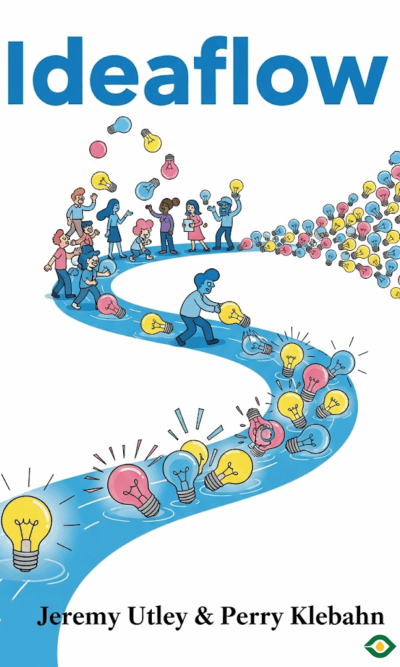Description
Most people wake up in the morning and think about work with a heavy heart. The idea of sitting in an office, following rigid rules, answering to strict bosses, or feeling trapped in meaningless routines can make the day feel gray before it even begins. Richard Sheridan once felt the same way. As a manager in a software company, he dreaded going to work so much that he would drive the long way to the office just to delay his arrival. That deep discomfort made him ask an important question: could work ever feel joyful? Could a workplace actually inspire people instead of draining them?
Sheridan eventually created his own company, Menlo Innovations, in Ann Arbor, Michigan, and there he built something different. He wanted joy to be the central force of the workplace. Joy, he discovered, was not a fuzzy dream or a luxury—it was the key ingredient that helped people work better, stay creative, and build stronger bonds. His journey shows how joy can replace fear, bureaucracy, and rigid hierarchy.
The foundation of joyful leadership starts with authenticity. Many people wear masks at work, pretending to be stronger, more confident, or less vulnerable than they really are. This split between the “work self” and the “real self” eats away at energy and connection. Sheridan learned from a children’s grief program where kids decorated masks with their outer emotions on the front and their hidden feelings on the back. Leaders often do the same—outwardly displaying strength while privately feeling stressed or anxious. By showing true selves and embracing vulnerability, leaders open the door to trust and stronger relationships.
Hand in hand with authenticity comes humility. Sheridan believes no task is too small for a leader. He often cleans up after team lunches or empties the dishwasher at the office. These small acts signal that leadership is about service, not status. When employees see a leader willing to do simple chores, they feel respected, and a culture of humility spreads through the team. Instead of trying to appear untouchable, a leader shows they are part of the group, not above it.
Another pillar of joy is optimism. In business, it’s easy to get stuck in negative thinking—imagining every possible failure, every risk, every reason why something cannot work. While caution is useful, a leader must balance it with the bright energy of optimism. Sheridan calls this the “yellow hat” way of thinking: approaching challenges with belief in success. Sometimes optimism is as simple as saying, “That sounds like a great idea. Let’s try it.” Sheridan tells stories of leaders who abandoned their private offices, moved to the floor with their teams, and transformed workspaces by choosing optimism over fear. Optimism unlocks courage, creativity, and connection.
A joyful organization is also built on service. Sheridan remembers being a child and assembling a bookshelf as a surprise for his parents. Their delighted reaction showed him a timeless truth: joy grows when you serve others. At work, this means treating even the smallest task as meaningful if it helps people. He tells the story of a McDonald’s worker named Mike, who didn’t just clean tables but went out of his way to bring napkins, smile, and wish travelers a good flight. Service, even in small doses, spreads joy. When service becomes the culture of a company, joy naturally follows.
But joy cannot survive in old-fashioned hierarchies where bosses simply command. Sheridan explains that a boss demands obedience, but a leader inspires action. True leadership exists at every level of an organization, not just at the top. When companies focus on creating leaders instead of bosses, they become more open to experimentation. Mistakes are no longer feared but seen as learning opportunities. At Menlo, the team embraced the motto “Make Mistakes Faster.” By accepting small failures, they avoided bigger ones and encouraged innovation. In this kind of culture, people feel safe enough to try, learn, and grow.
Strong systems also play a role in joy. Many workplaces blame individuals when things go wrong, but Sheridan teaches that it’s often the system that’s broken. At Menlo, the time-tracking system helps predict workloads accurately and prevents burnout. Systems should not punish people—they should support them and reward the behaviors that build culture. He describes one company that rewarded individual patent holders with plaques, even though innovation was a team effort. Once the company shifted to celebrating entire teams, collaboration improved. The system shaped behavior, and behavior shaped culture.
Joy grows when people care about one another. At Menlo, interviews are designed to test not only skill but also kindness. Candidates work in pairs and are told to help each other. Success comes not from outperforming a partner, but from lifting each other up. This spirit of caring continues into daily work. Sheridan shares stories of employees helping one another through personal struggles, from picking up a colleague for work each morning to protecting a leader’s family time from overwork. When people genuinely care for each other as humans, not just coworkers, the workplace becomes more alive and compassionate.
Another essential element of joy is learning together. Businesses that stop learning risk becoming obsolete, as the collapse of Borders Books showed when it failed to adapt to the internet age. To keep joy alive, organizations must be learning organizations. At Menlo, employees are paired to work together, switching partners regularly. This means constant sharing of knowledge, ideas, and skills. It builds resilience and ensures that no single person holds all the expertise. Books, reading groups, and open discussions are also encouraged. Continuous learning keeps people curious, engaged, and prepared for the future.
In the end, Sheridan reminds us that work does not have to be filled with dread. Leaders can choose joy by being authentic, humble, optimistic, service-oriented, and open to learning. They can design systems that support people instead of crushing them. They can cultivate care, encourage mistakes, and replace hierarchy with shared leadership. A joyful workplace is not only possible—it is powerful. It leads to stronger teams, more creativity, and deeper meaning.
One practical tip Sheridan gives is to offer equal bonuses to everyone in the company, regardless of position. By giving the same reward to an engineer and a receptionist, a company signals that every contribution matters. This reinforces the idea that success is built by the whole team, not just by a few star players.
Joy at work is not about chasing constant happiness or avoiding problems. It is about building an environment where people feel real, valued, and connected. It is about creating spaces where optimism is welcome, mistakes are accepted, service is celebrated, and learning never stops. Sheridan’s vision shows that joy is not just a personal feeling—it can be the heart of an organization, guiding people toward better work and better lives.





